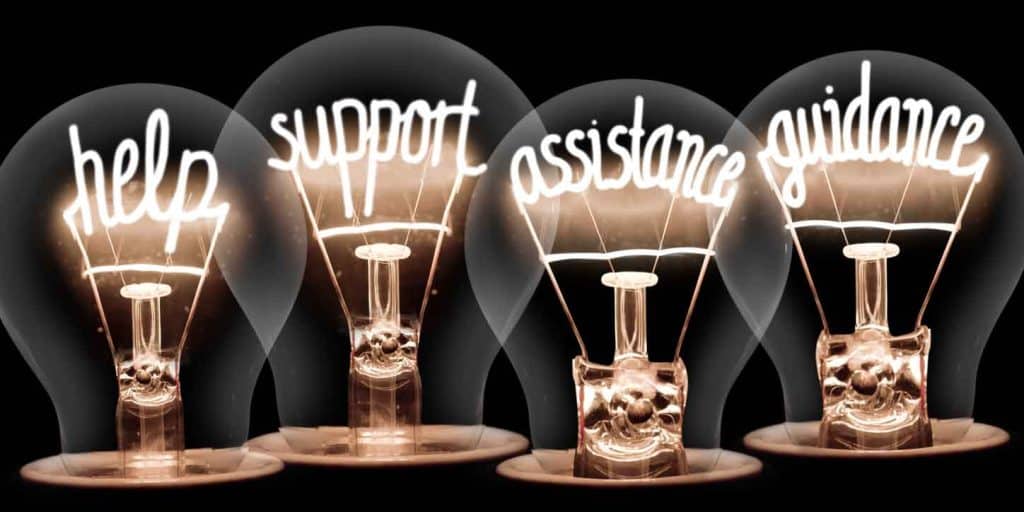15 Tricks for Successful Budgeting
If you are like many Americans, you have credit card debt. According to Creditcards.com, approximately 37% of all households in the U.S. have unpaid balances on their credit cards. The average credit card debt per borrower in 2019 was reported as $5,554.
Credit card interest is one of the highest types of debt, with annual interest averaging over 17%. If you have a poor credit rating, interest can be more than 24%. This amounts to at least $1,000 in annual interest payments for consumers who carry average revolving credit card debt. Of course, if you pay off cards each month, you won’t pay interest or accrue debt.
In addition to credit card debt, many people have school loans, cars loans and mortgages. However, even frugal Americans can become overwhelmed by debt when faced with medical expenses. Nerd Wallet reports that medical expenses have risen 33% since 2009, outpacing growth in household income.
No matter what type of debt you have, budgeting can help you manage your income, reduce your debt and achieve your financial goals. If you budget realistically, you don’t have to live an austere life. You can plan in fun, entertainment and enjoyment of the things that make life worth living. Here are 15 tips to get your budget under control, get rid of debt and save money.
1. Calculate Your Monthly Income

If you get a regular paycheck, it’s easy to calculate your monthly income. However, if your income is irregular, use a figure that represents your lowest monthly income. Income should include paychecks, Social Security payments, alimony, child support, income from freelancing or any other source of cash that comes into your household.
2. Calculate Your Regular Expenses
Some expenses must be paid every month. Others may be quarterly, annual or irregular. Start with your regular expenses, including:
• Rent or mortgage payments.
• Phone and internet.
• Car loans.
• Food.
• Utilities.
• Transportation costs, including gasoline or public transportation costs.
3. Calculate Occasional Expenses
Calculate occasional expenses, including:
• Car insurance.
• Car repairs.
• Clothing.
• Home repairs.
• Taxes.
• Medical expenses, including copayments and medicines.
Although these expenses may not occur every month, you must budget for them. Review your records for the past year to estimate amounts. By setting money aside for irregular items, it’s there when you need it.
4. Write It Down

Write down income and expenses using a spreadsheet, old-fashioned pencil and paper, an app on your computer or phone or any other way you like. Now, subtract expenses from income. If you have a remainder, you financial flexibility. You can plan how to allocate it, such as for savings, projected expenses, personal wishes and contingencies.
If there is no remainder or you have deficit, budgeting will help you find ways to cut expenses and take control of your finances.
5. Create a Budget

After calculating your monthly income and expenses, create a budget. Include items that must be paid each month and those that are not critical, such as entertainment and clothing. Update your budget frequently. To be successful, account for every dollar coming in and going out.
If you have a deficit, look for places to cut expenses and save money. Even small changes add up. Planning meals lets you budget realistically for food. Instead of buying coffee every day at the local coffee shop, make your own. Rather than eating lunch out during the work week, bring food from home.
6. Define Financial Goals
Everyone’s financial goals are different. If you are not in debt, it’s easier to plan both wants and needs. Your age may also dictate how you plan. If you want to buy a house or have a family, planning must take these expenses into account. Saving for a child’s education and retirement are two important goals.
If you are in debt, map out your plan to become debt-free. This may include consolidating debt, throwing away credit cards or modifying your lifestyle. The great thing is, your goals make sense for your unique lifestyle and needs. You can tweak them, refine them or completely overhaul them as situations change.
7. Communicate With Your Partner

If your finances are intertwined with others, include them in the process. Planning together reinforces resolve and ensures that all parties have common goals and a way to achieve them. Meet frequently to review expenses and refine goals. As you retire debt, plan how to reallocate the extra income.
8. Address Credit Card Debt
Credit card debt can be a huge drain on finances. High interest rates water down the effectiveness of repayment. There are several ways to approach credit card debt, including consolidating debt with a personal loan, applying for balance transfer cards with zero interest or making extra payments to whittle away accruing interest.
Whatever you do, whether you go for debt consolidation or zero-interest cards, lock up—or destroy—your old cards. Don’t fall into the trap of making new charges on high-interest cards with available credit.
9. Make Envelopes
If it’s too easy to swipe cards and lose track of how much you spend, use envelopes instead. Withdraw a planned amount of cash from your bank account and put it into envelopes earmarked for designated uses, such as groceries or transportation. Carrying a fixed amount of cash helps you curb impulse buying. If you are at the grocery store, buy just those items that are necessary for your menus. If your purchases exceed the amount in the envelope, buy less. Don’t spend more than you budgeted.
10. Update
Budgeting must be an active, ongoing process to be effective. Refine and update changes in income or expenses as they occur. Track your expenses in detail throughout the month to monitor spending patterns. If one category is underbudgeted, immediately adjust your budget to cover actual expenses. If needs change, tailor your budget accordingly. Updating keeps your budget proactive and dynamic. As you reduce debt, you can reallocate income.
11. Pay Yourself
The golden rule of personal finance is to pay yourself first. The easiest way is to set up an automatic deposit that goes into your savings account or other hands-off fund such as a 401(k) or IRA. As savings grow, you can diversify your nest egg.
12. Include a Contingency
Unexpected expenses can quickly wreck a great budget. Build a contingency fund of a defined amount, such as $1,000, to use when you need immediate cash. If you need new tires, you don’t have to use a credit card for the purchase.
13. Get Help
If your finances are out of control and you don’t know where to start, ask for help. There are several non-profit organizations that help consumers manage their debts. Many counties and cities offer free debt counseling services. Check local sources in your area for help.
14. Schedule Austerity
If your debt is overwhelming, sheer determination will be required to turn things around. You may have to schedule austerities, such as cancelling your cable, changing cellphone plans or stopping subscriptions. You can decide how long your austerity program will last—one month, six months or a year. Remember that these cuts are temporary until you achieve your financial goal.
15. Give Yourself Time
It takes time to get a workable financial plan in place. Don’t set unrealistic goals. Expect to make mistakes during the first few months. You have full control over your budget, which is designed to meet goals that you set.
Summing Up
Don’t put off taking charge of your finances. Waiting means that you are not working toward saving money for the future, paying off credit cards or buying a house. By knowing what you want to achieve and creating a budget to accomplish it, you gain financial freedom.
Do you have a plan to save money?
Does your budget reflect your needs and wants?



